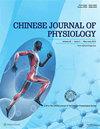Hydroxytyrosol [2-(3,4-dihydroxyphenyl)-ethanol], a natural phenolic compound found in the olive, alters Ca2+ signaling and viability in human HepG2 hepatoma cells
IF 1.6
4区 医学
Q4 PHYSIOLOGY
引用次数: 2
Abstract
Hepatotoma is the leading type of primary liver cancer in adults and third cause of death in the world. Hydroxytyrosol is a natural phenol existing in olive (Olea europaea L.). Hydroxytyrosol is the chief ingredient of olive oil, which was early deemed to be the most robust antioxidant in olive oil. Hydroxytyrosol is known to inhibit various types of cancer by different methods. This study was aimed to delineate the action of hydroxytyrosol on viability and [Ca2+]i in HepG2 hepatoma cells. Fura-2 was used to detect [Ca2+]i, and WST-1 assays were applied to explore cell cytotoxicity. Hydroxytyrosol elicited [Ca2+]i raises. Eliminating external Ca2+ diminished the Ca2+ signal by 30%. Hydroxytyrosol-evoked Ca2+ influx was diminished by 20% by three inhibitors of store-operated Ca2+ channels and by a protein kinase C activator and an inhibitor. In the absence of Ca2+, thapsigargin eradicated hydroxytyrosol-provoked [Ca2+]i raises. Suppression of phospholipase C (PLC) with U73122, a PLC inhibitor, did not inhibit hydroxytyrosol-elicited [Ca2+]i raises. Hydroxytyrosol reduced cell viability. This cytotoxic action was not reversed by preincubation with BAPTA/AM, a cytosolic Ca2+ binder. In sum, in HepG2 hepatoma cells, hydroxytyrosol elicited [Ca2+]i raises by provoking PLC-unrelated discharge of Ca2+ from ER and Ca2+ influx through PKC-sensitive store-operated Ca2+ entry. In addition, hydroxytyrosol elicited Ca2+-dissociated cytotoxicity.羟基酪醇[2-(3,4-二羟基苯基)-乙醇]是一种在橄榄中发现的天然酚类化合物,可改变人HepG2肝癌细胞的Ca2+信号传导和活力
肝瘤是成人原发性肝癌的主要类型,也是世界上第三大死因。羟基酪醇是橄榄(Olea europaea L.)中存在的一种天然酚。羟基酪醇是橄榄油的主要成分,早期被认为是橄榄油中最强大的抗氧化剂。羟基酪醇可以通过不同的方法抑制多种类型的癌症。本研究旨在描述羟基酪醇对HepG2肝癌细胞活力和[Ca2+]i的作用。Fura-2检测[Ca2+]i, WST-1检测细胞毒性。羟基酪醇引起[Ca2+]i升高。消除外部Ca2+使Ca2+信号减少30%。三种储存操作的Ca2+通道抑制剂和一种蛋白激酶C激活剂和一种抑制剂可使羟基酪醇引起的Ca2+内流减少20%。在缺乏Ca2+的情况下,thapsigargin根除羟基酪氨酸引起的[Ca2+]i升高。用PLC抑制剂U73122抑制磷脂酶C (PLC),不抑制羟基酪氨酸引起的[Ca2+]i升高。羟基酪醇降低细胞活力。这种细胞毒性作用没有被BAPTA/AM预孵育逆转,这是一种胞质Ca2+结合剂。总之,在HepG2肝癌细胞中,羟基酪醇通过激发内质网中与plc无关的Ca2+放电和通过pkc敏感的储存操作的Ca2+进入引起Ca2+内流,从而引起[Ca2+]i升高。此外,羟基酪醇引起Ca2+解离细胞毒性。
本文章由计算机程序翻译,如有差异,请以英文原文为准。
求助全文
约1分钟内获得全文
求助全文
来源期刊
CiteScore
2.30
自引率
5.60%
发文量
36
审稿时长
6-12 weeks
期刊介绍:
Chinese Journal of Physiology is a multidisciplinary open access journal.
Chinese Journal of Physiology (CJP) publishes high quality original research papers in physiology and pathophysiology by authors all over the world. CJP welcomes submitted research papers in all aspects of physiology science in the molecular, cellular, tissue and systemic levels. Multidisciplinary sciences with a focus to understand the role of physiology in health and disease are also encouraged.
Chinese Journal of Physiology accepts fourfold article types: Original Article, Review Article (Mini-Review included), Short Communication, and Editorial. There is no cost for readers to access the full-text contents of publications.

 求助内容:
求助内容: 应助结果提醒方式:
应助结果提醒方式:


